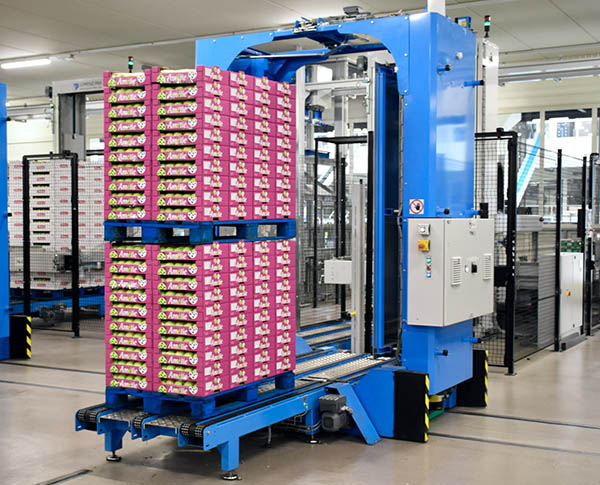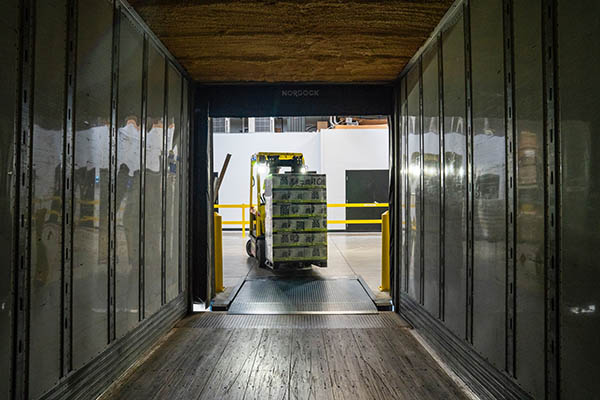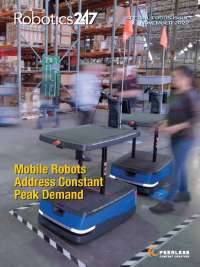Cold chain warehouses can protect employees from workplace hazards and boost efficiency with the help of innovative robots.
The COVID-19 pandemic has left many facilities coping with labor shortages alongside increasing demand for cold goods and fast service from the online grocery market.
Warehouse robots are the perfect tools to improve workplace safety while also closing the gap left by employee shortages, which will improve safety even further.
Boosting efficiency with warehouse robots
Automating warehouses has many benefits, including improved employee safety and noticeable efficiency improvements, even with fewer workers. At the end of April, the U.S. was short an estimated 11.4 million workers, with unfilled job openings in every industry. Shortages will inevitably hit warehouses.
Unfortunately, this can impact employee safety since smaller teams must work harder to compensate for warehouse job vacancies. This can lead people to overwork themselves and increase the likelihood of injuries on the job.
Bringing in warehouse robots can reduce this stress and strain on employees while also giving cold chain warehouses a great return on investment (ROI). Kristi Martindale, an executive at warehouse robotics company Sarcos Technology and Robotics Corp., said, “after energy-related concerns, labor-related issues are the second-greatest pain point for third-party logistics companies (3PLs), as 70% of overall costs for 3PLs are attributed to labor.”
Martindale emphasized that cold chain warehouses can be unsafe and undesirable spaces to work in due to the frigid temperatures and often wet conditions. Robots can take on the most dangerous and unwanted warehouse jobs, which will keep employees safer while also giving them a better working experience. Bots are also likely to improve efficiency.
For example, Nolan Meats operates the largest fully automated cold storage facility in the Southern Hemisphere in Gympie, Australia. The facility saw staggering increases in productivity once they brought in robots to do things like process frozen meat.
Terry Nolan, the director of Nolan Meats, said, “it improves the quality of the meat, it improves the shelf life, improves food safety angles, so there are lots of bonuses.” Nolan explained that Nolan Meats still has hundreds of human employees on-site. Robots simply automate parts of meat processing and packing.
Robotic process automation can also be used to help automate operations. Professionals will know that it is crucial that certain temperatures be maintained in cold chain warehouses. Any climate deviations can lead to issues like mold and puddling. Consistent temperatures are especially important for the food and beverage industry, which relies heavily on cold chain facilities.
Warehouses can use automated climate control systems to monitor and maintain temperatures and conditions in cold chain spaces. Applying RPA ensures that common human error or forgetfulness does not negatively affect any products stored in cold chain warehouses or endanger employees due to things like puddles or ice.

Staying safe in freezer spaces
Working in a cold chain warehouse requires a high level of awareness about safety. Employees wear coats, gloves and other cold-climate gear, but working long hours in freezing temperatures can still take its toll, and accidents happen in any workplace. For example, a freezer leak can create puddles that, if iced over, can be a fall hazard. Even the hands and fingers are prone to injury and overexertion from handling cold items.
Robots can help with these challenges and improve the employee experience in cold chain warehouses. Even if these bots don’t completely replace human workers or take employees out of the equation, they can reduce the amount of exposure people have to freezing temperatures.
For example, grocery-getter warehouse robots do most of the legwork for employees by retrieving food items from cold storage. This could reduce potential fall hazards and exposure to frigid temperatures. Similarly, palletizing robots can lift, handle and pack heavy items even in freezing conditions. Robots can operate in subzero temperatures, as well. They are covered in a “coat,” a protective sleeve that protects lubricants and moving parts from low temps.
The next-gen cold chain warehouse
Cold chain warehouses can protect workers and improve the employee experience by applying robots to operations, palletizing and many other tasks. Today’s bots are more than capable of handling the low temperatures in these facilities. They can take on dangerous and undesirable jobs and even improve efficiency along the way.
About the author

Emily Newton is a tech writer who enjoys writing about the latest innovations changing our world. Read more of her articles online at Revolutionized Magazine.
Article topics
Email Sign Up


















